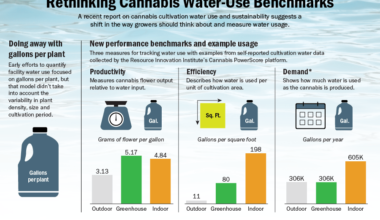
Lawmakers are moving forward with efforts to remove provisions from the state’s voter-approved medical cannabis law that permit qualified patients to home-cultivate personal use quantities of cannabis. Nearly 70 percent of voters decided in favor of the ballot Measure (Measure 26) last November.
Republican Gov. Kristi Noem campaigned against the measure in the months immediately prior to the election. In February, House lawmakers voted to delay the law’s implementation; however, that effort failed when House and Senate lawmakers failed to come to an agreement on conflicting provisions in the bill. This month, lawmakers participating in a Study Committee recommended that legislators formally rescind language in the law that permits patients to grow up to three marijuana plants. A majority of House and Senate lawmakers would still need to approve those recommendations before they could take effect.
Under the law, state regulators must begin issuing identification cards to qualified patients by May 15, 2022.
Voters are still awaiting the fate of a separate voter-initiated ballot measure, Amendment A, which sought to legalize the personal possession and retail sale of marijuana by adults. Fifty-four percent of South Dakota voters decided on Election Day in favor of the measure. However, Gov. Noem facilitated litigation seeking to strike down the law as unconstitutional.
In February, Judge Christina Klinger of the state’s Sixth Judicial Circuit Court ruled in favor of the challenge — opining that the measure violates state requirements that ballot measures not encompass more than one topic. Justices on the state Supreme Court heard an appeal of the case in April, but have yet to render a decision either upholding or striking down the lower court’s ruling.
Additional information on the South Dakota Medical Cannabis program is available from the South Dakota Department of Health.
Related
Medical Disclaimer:
The information provided in these blog posts is intended for general informational and educational purposes only. It is not a substitute for professional medical advice, diagnosis, or treatment. Always seek the advice of your physician or other qualified healthcare provider with any questions you may have regarding a medical condition. The use of any information provided in these blog posts is solely at your own risk. The authors and the website do not recommend or endorse any specific products, treatments, or procedures mentioned. Reliance on any information in these blog posts is solely at your own discretion.






